Is a cerebral infarction or a cerebral hemorrhage serious?
In fact, both are very serious in the clinic, but the specific evaluation must be judged on the basis of the actuality, and in the vast majority of cases brain hemorrhage is the more serious thing.
They are judged by the following specific indicators.
The first indicator is the area, because in many cases, cerebral infarction and cerebral hemorrhage are not the same as the area of the disease. Sometimes cerebral infarction is only a small area of lacunar cerebral infarction, which is generally not particularly serious, but there are also large cerebral infarction, which may be life-threatening if not operated in time.
The same is true for brain hemorrhage, if he only has a very small brain hemorrhage, it will not seriously affect his life, but some patients may also have a large number of brain hemorrhages that are so large that they cause a herniation of the brain and cause very serious symptoms and even death.
The second is the location of the patient's lesion.
The brain actually has a certain non-functional area, that is to say, although the lesions appear in this area, they may not be able to seriously affect the patient's prognosis, but there is also a certain area, which belongs to the function-intensive area, and the slightest damage may lead to serious consequences.
For example, the basal ganglia, the thalamus, the brainstem and so on are not for these parts of the body once the damage, such as the formation of cerebral hemorrhage or cerebral infarction, even if the area is very small, it is possible to cause very serious consequences.
For example, the frontal or temporal poles, even if these two areas have a large lesion or are removed completely during surgery, do not have a serious impact on the patient.
So be sure to judge his exact position.
The next thing is that the overall state of the patient, such as the age of the patient, the patient's past, the disease state, the patient's overall physical fitness and so on are all very clearly related.
The most feared are patients who are old, with complex past illnesses, combined hypertension, diabetes, emaciation, and who have previously lived in a relatively difficult situation, like this one, whether it is a cerebral infarction or a cerebral hemorrhage, which is very serious.
There are many cases where the disease is also very mild, for example, the patient is young and physically fit, has no special diseases in the past, and lives a relatively nourishing life, like this there are many times when the disease is not serious, and the later effect after active treatment is also very good.
Lastly, there are treatment measures, and there are many cases where the difference in treatment measures also determines the difference in prognosis between the two.
For example, whether a cerebral infarction can be given the correct thrombolytic treatment, or whether a cerebral hemorrhage can be given the correct hemostatic treatment, the criteria of whether timely surgical treatment can be carried out, and whether the later stage can undergo active rehabilitation and functional exercise.
These are relevant evaluation indicators.
Therefore, in general, there is no one-sided factor to determine which is light and which is heavy, only a comprehensive assessment to clarify the specific circumstances of the change, which can be more conducive to the overall assessment of the severity of the disease.
If you have any questions you can private message me, not able to read on this, but can give you a relatively correct advice. Feel free to like, comment, retweet, and follow me to bring you to the real world of neurosurgery (brain surgery).
I have two relatives around me, one is cerebral infarction, one is cerebral hemorrhage. I understand the situation is: cerebral infarction of this occurred at that time no family members around, found when the mouth has been salivating will not speak, crooked in the bed, but conscious or awake, sent to the hospital because they can not determine the specific time of the onset of the disease, so the conservative treatment, did not use the kind of special drugs that are said to be in a certain period of time can be used, the life is still preserved, that is, after the can not speak, half of the body is no He was still saved, but he could not speak and half of his body did not feel anything. Another cerebral hemorrhage, then directly collapsed, people have no consciousness, the family sent to the hospital directly into the rescue room, may be too much bleeding, and finally not a few days people died. Personally, I think that cerebral hemorrhage is more dangerous, the mortality rate is very high, cerebral infarction, if the treatment is timely, the chances of survival are still very high.
For cerebral hemorrhage and cerebral infarction which of the two of them is serious, this is not absolute, depends on the patient's condition, cerebral infarction patients generally occur in the age of 60 years of age or older mostly, cerebral hemorrhage patients generally age concentration in the age of 50-60 years old, and now more and more youthful.
I have a few points about which one is serious.
1. In terms of actual clinical treatment, it is a fact that the condition of patients with cerebral infarction is milder than that of patients with cerebral hemorrhage.
2, generally in the clinical similar disease, occurred in a little young and the elderly, a little young people's disease will generally be more serious, because a little young people's physical condition is so good, but also sick that this disease is more serious.
3, the prognosis of the two is also different, the prognosis of patients with cerebral infarction is generally lighter.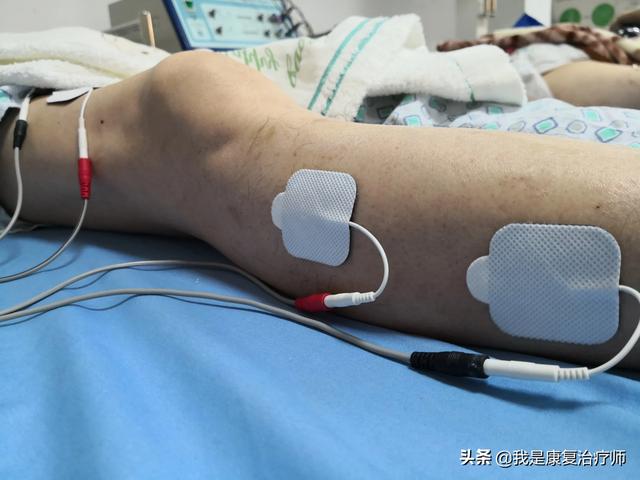
1.Cerebral infarction and cerebral hemorrhageAll of them are serious. Cerebral infarction is vascular occlusion, ischemic cerebrovascular disease. Cerebral hemorrhage is a rupture of a blood vessel, a hemorrhagic cerebrovascular disease. They are seriouscommon groundIt is to paralyze a person, leaving him or her disabled and unable to take care of himself or herself. In more serious cases, it can lead to coma and death.
2.cerebral infarctionAccording to the cause of the disease, there are atherosclerotic type of large arteries, cardiogenic embolism, small atherosclerotic type, other causes and unexplained type. Most of the small atherosclerotic types are not serious. The severity of the other types is mainly based on the vessel and area of the lesion. The arterial vessels supplying the brain are mainly divided into the internal carotid artery system and the vertebral basilar artery system. If the area of vascular infarction is large, the prognosis is often more serious.
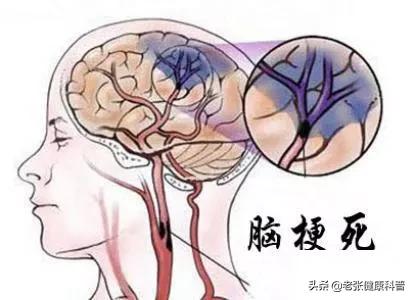
3. If the main stem of the internal carotid artery, the main stem of the middle cerebral artery or the cortical branch is completely occluded. It often shows complete hemiparesis on the opposite side of the lesion, hemiplegia, hemianopsia, and hemianopsia. The disease progressively aggravates, and obvious cerebral edema and intracranial hypertension may easily appear. It is easy to be left with hemiplegia and even death.Occlusion of the basilar artery or bilateral vertebral arteries can have serious life-threatening consequences.And cerebral infarction has a high recurrence rate, with one recurrence being severe.
4.cerebral hemorrhageMostly referred to as primary non-traumatic cerebral hemorrhage, it accounts for about 20% to 30% of all strokes, and the mortality rate in the acute phase is about 30% to 40%. The severity of cerebral hemorrhage is also related to the amount and location of bleeding.
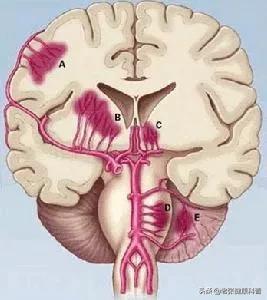
5, The most common site of cerebral hemorrhage ishemorrhage in the shell and nucleus of the body. About 60% of cases. Hemorrhage often causes hemiparesis on the opposite side of the lesion, hemiplegia, hemiplegia and isotropic hemianopsia. Bleeding at this site is considered massive if the amount of bleeding is more than 30 ml. The disease is serious and has a poor prognosis. Even if some patients save their lives, they are prone to remain disabled, and in severe cases, it leads to death. Other parts such asbrainstemBleeding greater than 5 ml is associated with a higher mortality rate.wooden house with a roof built atop the house (esp. a home with a roof over one's head)Bleeding greater than 15 ml.cerebellum (part of the brain)Bleeding greater than 10 ml.acute cerebral ventricle (medicine)Bleeding. The consequences are all severe, with a high mortality rate.
6, Cerebral infarction and cerebral hemorrhage both belong to the category of cerebrovascular diseases, and they both have certainDisability and mortality rates. Seriously jeopardize people's health. It brings great burden to individuals and families. No matter which disease, it is best tonon-occurrencefor the best. Reducing the incidence of these diseases starts with preventing the causes.
7, Common causes of cerebral infarction and cerebral hemorrhageFor hypertension and arteriosclerosis.. To prevent the above causes, we should adopt a healthy lifestyle. Eat a sensible diet (low salt, low sugar, low fat diet), exercise moderately, stop smoking, limit alcohol, and have a balanced mind. Regular checkups and regular medication. Keeping the indicators of risk factors within the normal range can reduce the occurrence of diseases.

Are you satisfied with my answer? Follow me and be willing to discuss and share with you on some issues of medicine.
Cerebral hemorrhage and cerebral infarction both belong to stroke, and their severity is basically similar. Because both conditions are mainly neurological damage, but for patients with cerebral infarction, if the diagnosis is made within 4.5 hours, the prognosis will be very good if the thrombolysis is done early and in a timely manner. For patients with cerebral hemorrhage, if the amount of cerebral hemorrhage is relatively small, their recovery will also be good. However, the main goal of both treatments is to minimize neurological damage and maximize neurological recovery. The most serious complications of both are due to increased intracranial pressure. For example, the mechanism of cerebral hemorrhage that leads to increased intracranial pressure is the increase in the relative volume of the cranial cavity directly caused by the hematoma after the cerebral hemorrhage, which triggers the occupational intracranial pressure increase lesion. The increase in intracranial pressure caused by cerebral infarction is mainly due to the increase in intracranial pressure caused by cerebral edema in the localized infarcted area after infarction.
(I'm Luo Min, chief physician of a Grade 3A hospital, with more than 30 years of clinical experience in the first line of work of the "old" doctors, my efforts only to harvest everyone's approval, if my answer can help you, I hope you can like, attention, if you have any questions, you can comment or private message me, I will try to help everyone!)

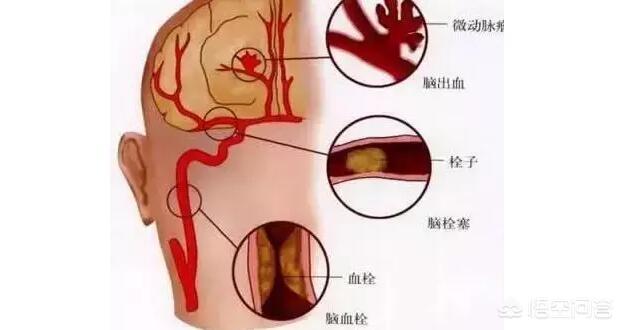
To figure out whether cerebral infarction or cerebral hemorrhage is serious, the first thing to do is to figure out the concept and pathogenesis of both:
cerebral infarctionAlso known as ischemic stroke, it refers to ischemic necrosis or softening of limited brain tissue caused by ischemia and hypoxia due to impaired blood supply to the brain. The clinical symptoms of cerebral infarction are very complex, which are closely related to the location of cerebral infarction, the size of cerebral infarction vessels, the severity of cerebral ischemia, the presence of other diseases before the onset of the disease as well as the presence of combinations of other important organ diseases. The main symptoms are dizziness, numbness of one side of the limbs, unsteadiness in holding things in mild cases, and sudden crookedness in walking, crooked corners of the mouth and drooling in severe cases.
cerebral hemorrhageAlso known as hemorrhagic stroke, it refers to bleeding caused by non-traumatic rupture of blood vessels in the brain parenchyma, accounting for 20% to 30% of all strokes, with an acute mortality rate of 30% to 40%. The causes are mainly related to cerebrovascular lesions, i.e., closely related to hyperlipidemia, diabetes mellitus, hypertension, aging of blood vessels, smoking and so on. Patients with cerebral hemorrhage often have a sudden onset of the disease due to emotional excitement and hard exertion.
Is a cerebral infarction or a cerebral hemorrhage serious?
Mild cases of cerebral infarction can be completely asymptomatic or present with recurrent episodes of limb paralysis or vertigo. In severe cases, patients may not only be paralyzed, but also suffer from acute coma, epilepsy and even death. Moreover, the onset of cerebral infarction is rapid, mostly occurs at rest or during sleep, and its clinical symptoms peak a few hours or 1~2 days after the onset of the disease.
The early mortality rate of cerebral hemorrhage is very high, and most of the survivors have different degrees of motor impairment, cognitive impairment, speech and swallowing disorders and other sequelae. Cerebral hemorrhage has a rapid onset, most often occurring during emotional excitement and activity, and the mortality rate is higher than that of cerebral infarction.
The key source of this problem is high blood pressure, cerebral infarction is the blockage of microvessels, and cerebral hemorrhage is the rupture of blood vessels. This is a derivative of high blood pressure, and all patients are at risk of relapse, even after treatment. Therefore, treating high blood pressure is the key, but modern medicine is obviously helpless, and only a skilled Chinese medicine practitioner can solve the problem. The mystery of the formation of high blood pressure, and only in this way can really let the blood pressure back to the original value of the state, so that by high blood pressure induced by all the derivatives of the disease (including coronary heart disease, infarction, sudden death, etc.) will always disappear from now on without a trace.
Both cerebral infarction and cerebral hemorrhage (cerebral bleeding) are classified as strokes, and both are cerebrovascular lesions in critical condition.
1. What is the condition of cerebral infarction?
Cerebral infarction, a disease in which the blood vessels supplying blood to the brain are blocked, resulting in localized ischemia and hypoxia of the brain tissue. Therefore, cerebral infarction is also known as ischemic stroke.
After the onset of the disease, the local brain tissue will be rapidly necrotic due to the lack of feeding, and symptoms such as paralysis of the paraplegic body, loss of vision on the paraplegic side, paralysis of the paraplegic body, numbness, and slurred speech will appear.
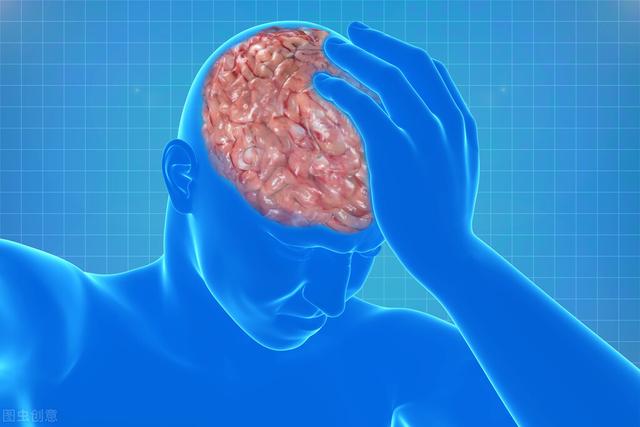
2. What is a cerebral hemorrhage?
The main cause of cerebral hemorrhage is atherosclerosis of small arteries, weakening of the elasticity of the blood vessel wall, and easy rupture of blood vessels and bleeding when the blood pressure rises suddenly.
When a cerebral hemorrhage first occurs, the brain is still able to receive a blood supply, so the patient's symptoms are not as intense as those of a cerebral infarction.Clinically, when cerebral hemorrhage first occurs, most patients do not have obvious symptoms, and a few have dizziness, headache and limb weakness.
Symptoms usually peak within minutes to hours of onset.As the ruptured wound gets bigger and bleeds more, the body raises blood pressure to maintain blood supply to the brain. Patients commonly experience headaches, vomiting, limb paralysis, confusion, and convulsions.
Which is more serious, cerebral infarction or cerebral hemorrhage?
The final consequences of cerebral infarction and cerebral hemorrhage are the same as those of theSite of occurrence, extent of occurrence, timeliness of resuscitation, physical fitness of the patientetc. are all related, and each case has to be analyzed on its own merits.
But overall, brain hemorrhages are more likely to cause more serious consequences.
I am cerebral hemorrhage caused hemiplegia, more than a year, now can walk, life can be self-care, is the affected hand flexibility is still almost, I personally think that cerebral infarction and cerebral hemorrhage is not comparable, is to see the severity of the disease.
Hello, this question is answered by Zhang Zhenhai, Deputy Director of Neurosurgery Department of Chongqing Sanbo Chang Hospital:
First of all, we need to understand the knowledge related to cerebral infarction and cerebral hemorrhage. Generally speaking, cerebral hemorrhage mainly occurs in middle-aged and old-aged patients or patients with chronic hypertension and vascular malformation, and the triggering factors are usually related to microvascular rupture and persistent elevation of blood pressure. Cerebral infarction usually occurs in middle-aged and elderly people around 45~70 years old, and the incidence factors are directly related to diabetes, obesity, hypertension and cardiac arrhythmia.
Cerebral infarction and cerebral hemorrhage which is more serious? Cerebral infarction and cerebral hemorrhage, which is more serious, can not be accurately judged, need to be analyzed according to the individual situation, if the patient occurs cerebral infarction, for mild as long as the standardized treatment can be completely cured, if the infarction area is relatively large, the emergence of a variety of complications, if not treated in a timely manner, the mortality rate of as high as 5~15%. For cerebral hemorrhage, the most important feature of this disease is the rapid onset and progression, patients can reach the peak within a few hours after the onset of the disease, if not treated in time during this period, the mortality rate will rise to 22%. Whether the patient has a cerebral hemorrhage or a cerebral infarction, the lack of treatment will cause death.
Cerebral hemorrhage and cerebral infarction are both very serious, patients should know more about these two diseases in normal times, once any symptom occurs go to the hospital for examination in a timely manner, according to the condition of the treatment, for cerebral hemorrhage treatment plan is generally taken to reduce intracranial pressure of the program to carry out the treatment, cerebral infarction in the acute seizure, the main principle of treatment is to improve the ischemic cerebral blood circulation, and to promote the repair of the cerebral nerve. The main principle of treatment for cerebral infarction is to improve the blood circulation of cerebral ischemia and promote the repair of cerebral nerves.
This question and answer are from the site users, does not represent the position of the site, such as infringement, please contact the administrator to delete.